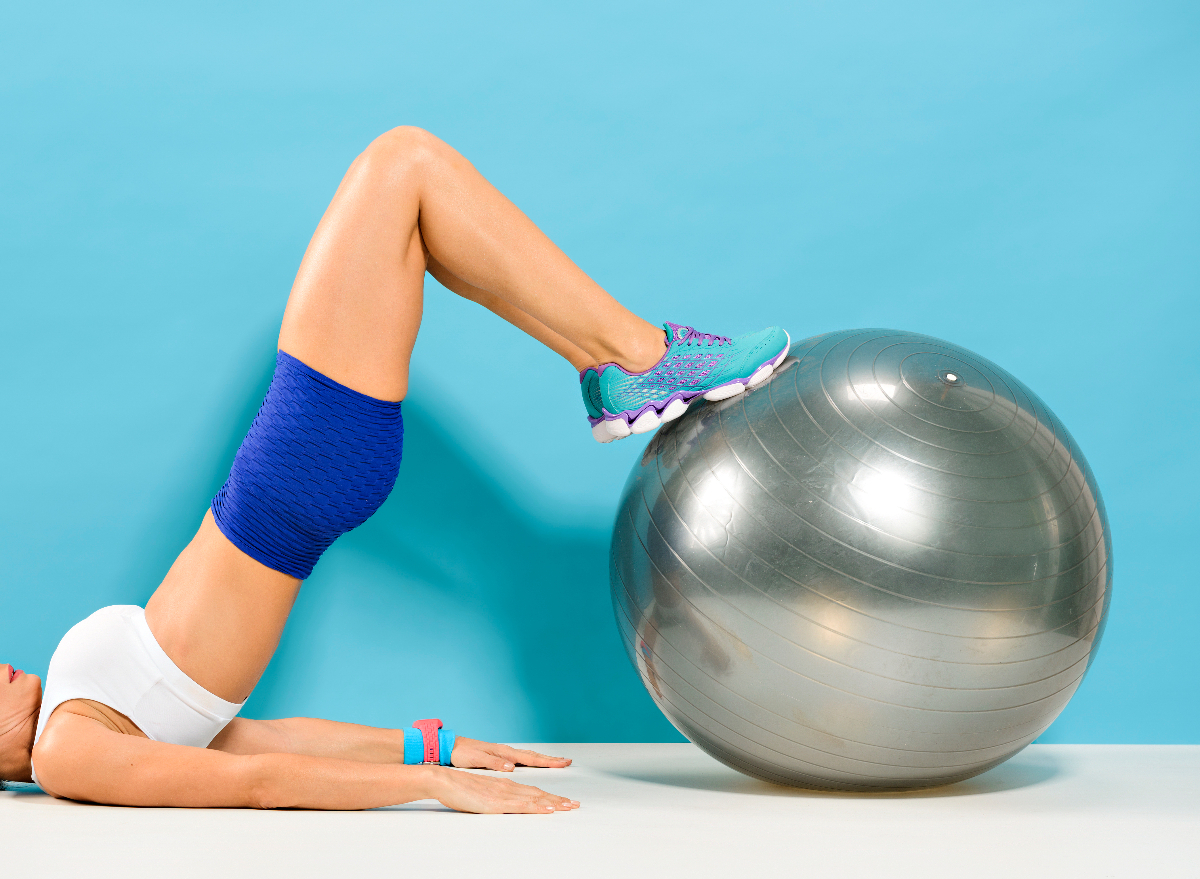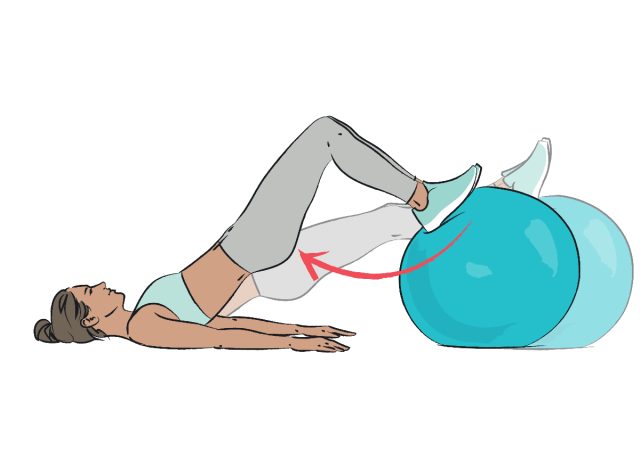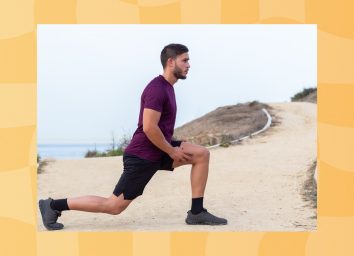Tone Your Butt in 30 Days With This Stability Ball Workout

Let's face facts: Most of us want a toned, perkier butt. But when it comes to knowing the best exercises for rounder glutes, many of us are at a loss. You may do some squats or lunges in an attempt to grow your glutes but struggle to see results. Fortunately, we have some good news to share. We're here to share a killer stability ball workout that will help you tone your butt in 30 days if you stick with it. Trust us—the end result will be worth the effort.
"The often overlooked stability ball can be a great tool for strengthening a range of muscles, and the glutes are no exception," states Kate Meier, CPT, a certified personal trainer with Garage Gym Reviews. Your butt muscles (glutes) are the largest muscle group in your body with the most potential for exerting power. Besides helping you sculpt a toned booty, strengthening your glutes offers other health benefits. According to the Methodist Health System, stronger glutes help reduce lower back pain, relieve knee pain, and boost exercise performance.
Now, let's dive into this stability ball workout to tone your glutes in 30 days. Aim to do three or four sets of 12 to 15 reps for each exercise with 45 seconds of rest between sets. Shorter rests will help keep your heart rate elevated, burning more calories. It will also keep your glutes activated for optimal booty-building results. Here's the workout.
1. Stability Ball Glute Bridge
First up is the glute bridge, which—you guessed it—will strengthen your glutes for a tighter butt.
Here's how to do the exercise, according to Meier. You'll first lie on your back with the stability ball by your feet. Place your feet on the ball with your hips on the floor, legs at about a 90-degree angle, and arms at your sides. Dig your heels into the ball as you raise your hips until they align with your shoulders and knees and your spine is neutral. Slowly lower back down to the starting position, then repeat.
2. Stability Ball Leg Lifts
Next, we're on to leg lifts. In addition to a tighter tushie, this movement will work your abdominal muscles.
Here's Meier's rundown. Lie face-down with the stability ball under your hips, your arms supporting your upper body, and your feet hovering over the floor. Squeeze your glutes as you lift your legs straight up. Once you reach the end of your range of motion, lower your legs back down. Keep your legs as straight as you can throughout the exercise.
3. Stability Ball Bulgarian Split Squat
Get ready for a solid leg burn. The Bulgarian split squat will build your quads, glutes, and hamstrings while toning your butt.
Follow these instructions from Meier. Stand in front of a stability ball, and face away from it. Place one foot on the ball, bending your rear knee to a 90-degree angle. Bend the front knee to lower yourself into a split squat, maintaining good posture and keeping your hips facing forward. Once your front knee is bent to about 90 degrees, stand back up and repeat.
4. Stability Ball Leg Curl

For a finisher, we have the classic leg curl—a guaranteed glute-strengthening exercise.
To execute, Meier instructs you to lie on your back with your legs propped up on a stability ball. Your legs should be straight, and the ball should be behind your lower legs and ankles. Engage your core to lift your hips while keeping your spine neutral. Bring your heels toward you while engaging your hamstrings and glutes. This will cause the ball to roll toward you. Roll the ball back to the starting position once the soles of your feet are on the ball and your knees are at about 90 degrees.









